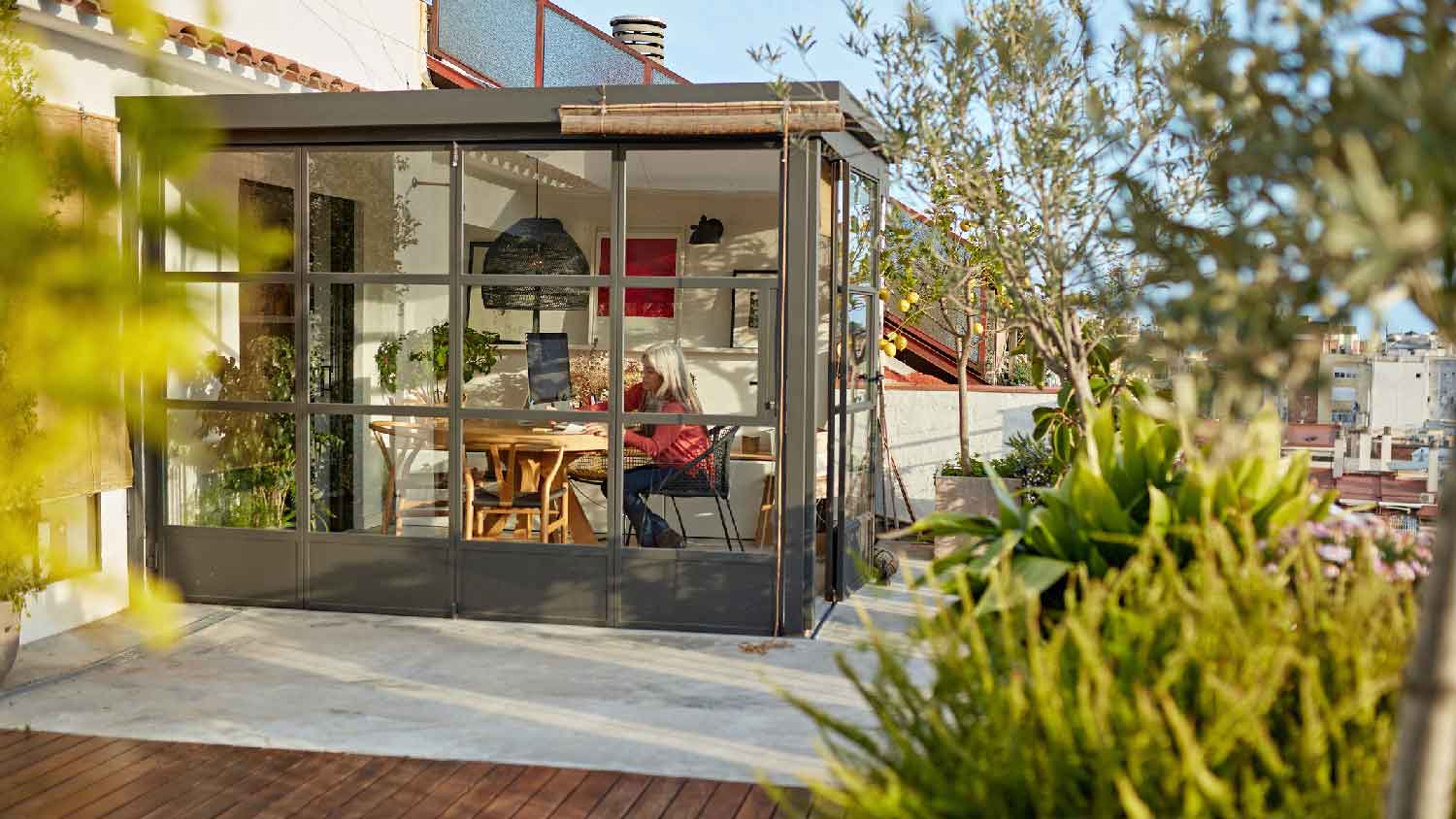What Is a Florida Room?
Bring the great outdoors inside with this home addition


Florida rooms are sunrooms enclosed by mesh screens or partial walls and windows.
These rooms let you enjoy the outdoors without insects, direct sun, or yard debris.
Florida rooms are attached to the back or side of the house, often off the kitchen or living room.
Florida is known for its hot, sunny weather, and Florida rooms are a great way to enjoy that weather with all the comforts of the indoors. Florida rooms aren’t limited to their namesake state—they’re found throughout the country, so homeowners can enjoy the outdoors without pesky insects, direct sun, or yard debris in the way. Our guide explores what Florida rooms are and why they can be a great addition to any home.
What Is a Florida Room?
Florida rooms are a type of sunroom, also known as garden rooms or three- or four-season rooms, and consist of one wall attached to the back or side of a home, a roof, and three walls of mesh screens or windows, sometimes with partial low walls. These rooms allow you to enjoy the warm weather without having to sit in direct sun, fend off insects, or constantly sweep up yard debris. Florida rooms vary widely in style, use, and construction but generally match the rest of the home from the outside. Florida rooms with only mesh screens are considered three-season rooms, while those that have low walls and glass windows are classified as four-season rooms.
What Is a Florida Room Used For?
Florida rooms can be customized for a wide range of uses, including:
Lounge or living room with outdoor furniture
Kids’ playroom
Semi-outdoor dining space
Entertaining space
Greenhouse or conservatory
Florida Room vs. Other Types of Sunrooms
With so many types of sunrooms, you may be confused about what sets a Florida room apart. Unlike California rooms, lanais, and covered porches, Florida rooms are fully enclosed with mesh walls or windows. Glass windows are more common in Florida rooms than Arizona rooms, although the two names are often used interchangeably. Screened porches are most often attached to the front of a home and use outdoor flooring or decking, while Florida rooms are found off the back or side of a home and have indoor/outdoor flooring like tile or waterproof laminate.
How Much Does a Florida Room Cost?

Building a sunroom addition costs an average of $22,000 to $73,000, and Florida room costs will run toward the middle or higher end of that average. A local sunroom contractor can design and build a Florida room that integrates seamlessly with your home’s design—choose a pro who builds sunrooms in the style you’re looking for.
A sunroom can add value to your home, so it’s a good return on investment when it comes time to sell. Whether or not your Florida room counts toward your home’s square footage depends on how it was built, local regulations, and more, so check local codes to learn if it’ll add to your square footage or simply be a valuable add-on.
Frequently Asked Questions
Florida rooms can have heat or air conditioning, although not all do. These rooms can be added to the existing HVAC system or use a mini-split system, or they may just use a ceiling fan or the breeze from the windows for cooling. Florida rooms with air conditioning often have glass windows to keep the cool inside instead of just mesh screens.
A lanai is a covered patio with open walls, while a Florida room has sides made of mesh screens or windows, with or without partial low walls. In addition, lanais often use concrete or other patio flooring, while Florida rooms may have more indoor-style flooring like tile or wood. Both allow you to enjoy the outdoors without being in the direct sun, but a lanai doesn’t offer any barrier against insects or debris.















